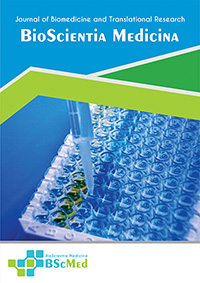Main Article Content
Abstract
Background: Foreign body ingestion is a significant cause of pediatric morbidity. The traditional "blunt" classification is insufficient for risk stratification, as objects like magnets and impacted items pose distinct threats based on their intrinsic properties. This study analyzes how a pathophysiology-based approach, distinguishing active (magnetic) from passive (mechanical) injury mechanisms, guides clinical decision-making.
Methods: We conducted a retrospective, descriptive case series at a tertiary pediatric surgical center, reviewing cases from January 2022 to December 2024. Five illustrative cases of high-risk blunt foreign body ingestion were selected to demonstrate the spectrum of management based on the object's potential for harm.
Results: The series included five children (aged 3-7 years). A 7-year-old with a single gastric magnet retained for five days developed mucosal injury and required urgent endoscopic removal. A 5-year-old with a recently ingested solitary gastric magnet and a 3-year-old with an impacted pyloric pendant also underwent urgent endoscopic removal. A 6-year-old with a gastric coin had elective endoscopy due to socioeconomic factors. In contrast, a 5-year-old with a coin that passed the pylorus was managed conservatively with spontaneous passage. All patients had successful outcomes.
Conclusion: The management of pediatric foreign body ingestion should be dictated by the object's pathophysiological potential for injury, not its shape. Understanding the difference between active magnet-induced pressure necrosis and passive mechanical impaction is paramount for applying guidelines effectively and preventing severe complications. This framework supports a necessary shift from shape-based to mechanism-based risk assessment.
Keywords
Article Details
As our aim is to disseminate original research article, hence the publishing right is a necessary one. The publishing right is needed in order to reach the agreement between the author and publisher. As the journal is fully open access, the authors will sign an exclusive license agreement.
The authors have the right to:
- Share their article in the same ways permitted to third parties under the relevant user license.
- Retain copyright, patent, trademark and other intellectual property rights including research data.
- Proper attribution and credit for the published work.
For the open access article, the publisher is granted to the following right.
- The non-exclusive right to publish the article and grant right to others.
- For the published article, the publisher applied for the Creative Commons Attribution-NonCommercial-ShareAlike 4.0 International License.





